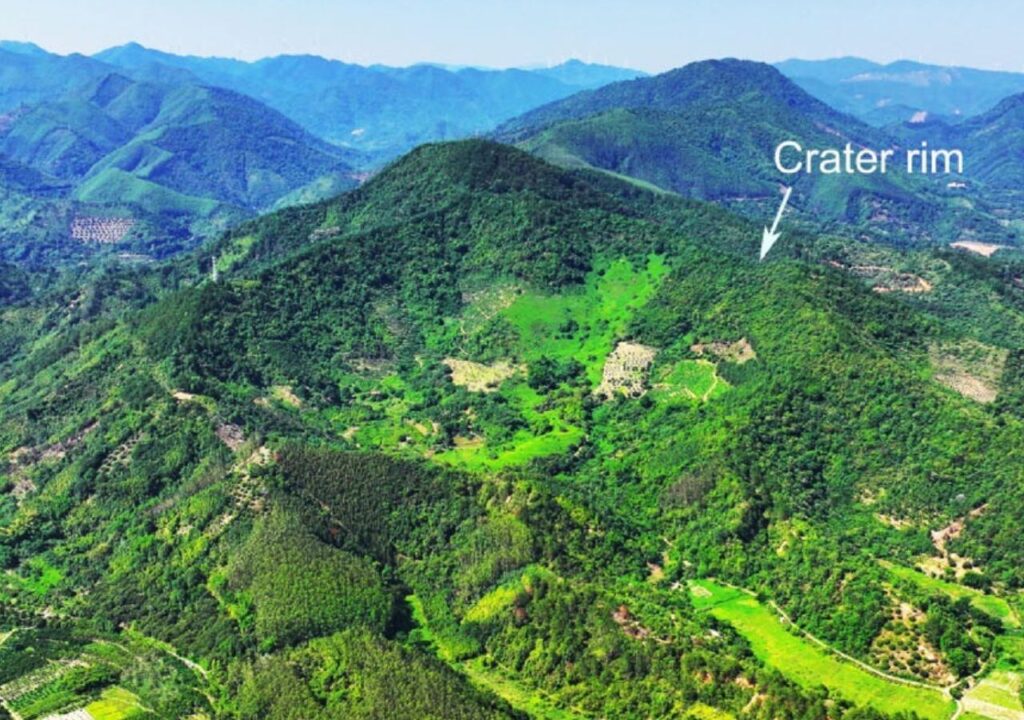
Scientists in China have confirmed the discovery of the largest known impact crater formed on Earth during the Holocene period, which began around 11,700 years ago. The Jinlin impact crater, located in Deqing County, Guangdong Province, marks a significant breakthrough as the first confirmed impact crater in southern China and the most extensive found from this geological era.
Measuring up to 900 meters (2,953 feet) wide, the bowl-shaped formation offers critical insights into the study of recent extraterrestrial collisions. The crater, formed when a small asteroid slammed into a granite hillside, far exceeds the size of previously recorded Holocene craters, most of which are under 300 meters (984 feet) across.
Geological Evidence and Extraterrestrial Origins
The impact released energy estimated to be equivalent to 600,000 tons of TNT, according to the China Academy of Engineering Physics. Researcher Chen Ming, who led the investigation, highlighted that field studies and lab analyses revealed signs of shock metamorphism in the crater’s rock. This provides clear evidence that the structure was caused by a hypervelocity impact from an extraterrestrial object.
Chen, affiliated with the Center for High Pressure Science and Technology Advanced Research, noted that the microscopic deformation features in quartz can only occur under the extreme pressures found during such collisions. This discovery not only expands China’s crater map but also broadens global understanding of how such structures can persist in humid, weather-prone environments.
Preservation Amidst Erosion
The impact crater lies within a mountainous area of northwest Guangdong, where granite has weathered under tropical conditions. Despite the region’s high rainfall and intense erosion, the crater is remarkably well preserved. Scientists believe the relatively intact state of the rim and interior suggests the crater is geologically young.
The structure’s orientation follows the natural slope of the mountain, appearing slightly elliptical and tilting southwest with a rim elevation difference of about 200 meters (656 feet). The southern rim features a V-shaped gap that allows rainwater to drain from the basin, and several deep gullies trace the inner and outer walls, indicating ongoing erosion.
Scientific Analysis and Global Significance
Granite fragments scattered across the crater floor showed minimal weathering, further supporting the theory that the impact occurred within the past 10,000 years. Researchers examined 100 thin sections of quartz from rock samples and found over 50 grains containing planar deformation features consistent with known impact sites.
“The discovery of the Jinlin crater not only enhances our understanding of impact craters in China but also provides a rare opportunity to study how these structures persist in challenging environments,” said Chen Ming.
Prior to this discovery, all confirmed craters in China were found in the northeast. This finding represents a significant shift in the geographical understanding of impact sites in the region.
Implications for Future Research
This development follows a growing interest in the study of impact craters as they offer valuable insights into Earth’s geological history and the frequency of extraterrestrial collisions. The Jinlin crater’s preservation amidst a humid and erosion-prone environment challenges previous assumptions and opens new avenues for research.
Looking forward, scientists aim to conduct further studies to understand the long-term effects of such impacts on local ecosystems and geology. The Jinlin crater could become a focal point for international research collaborations, enhancing our understanding of planetary science and impact phenomena.
The discovery of the Jinlin impact crater underscores the importance of continued geological exploration and research, as it not only enriches our knowledge of Earth’s past but also prepares us for potential future encounters with cosmic visitors.





